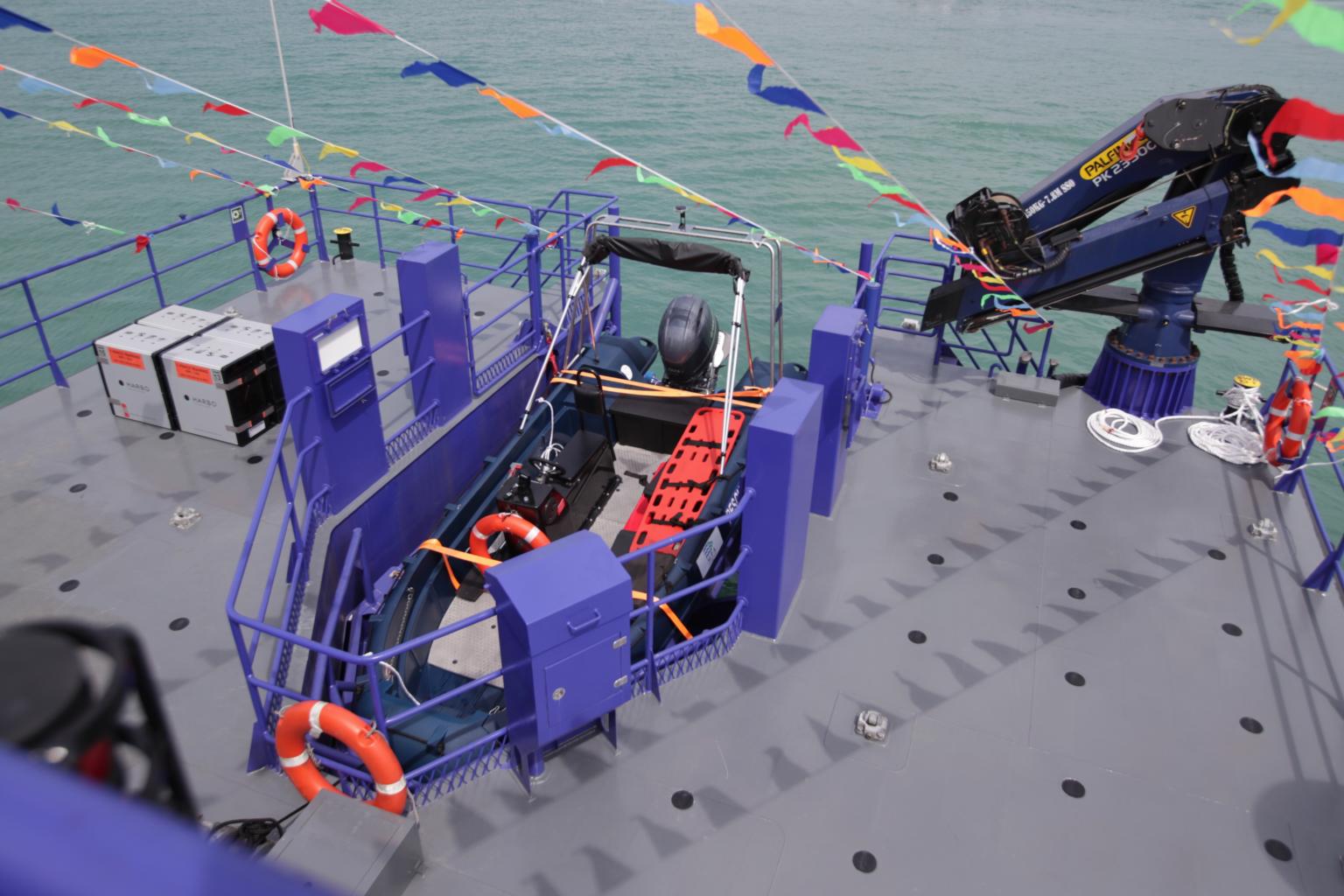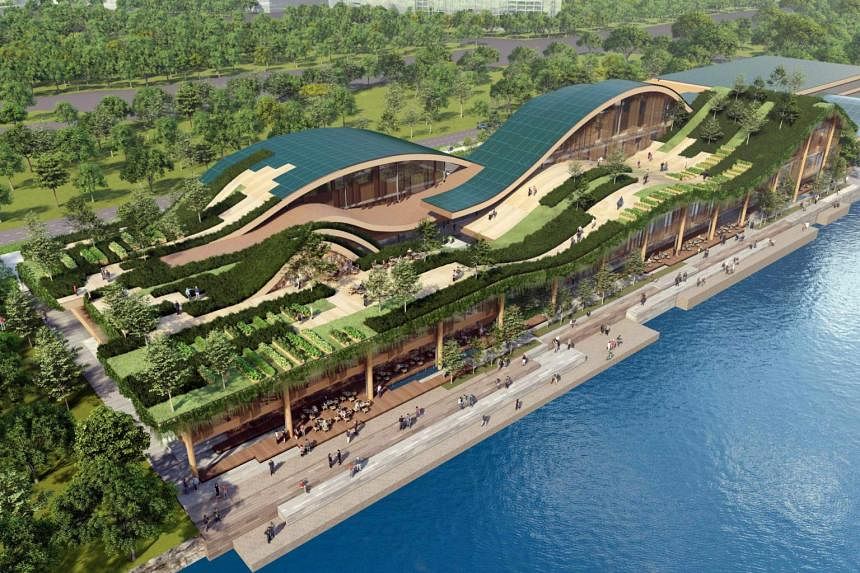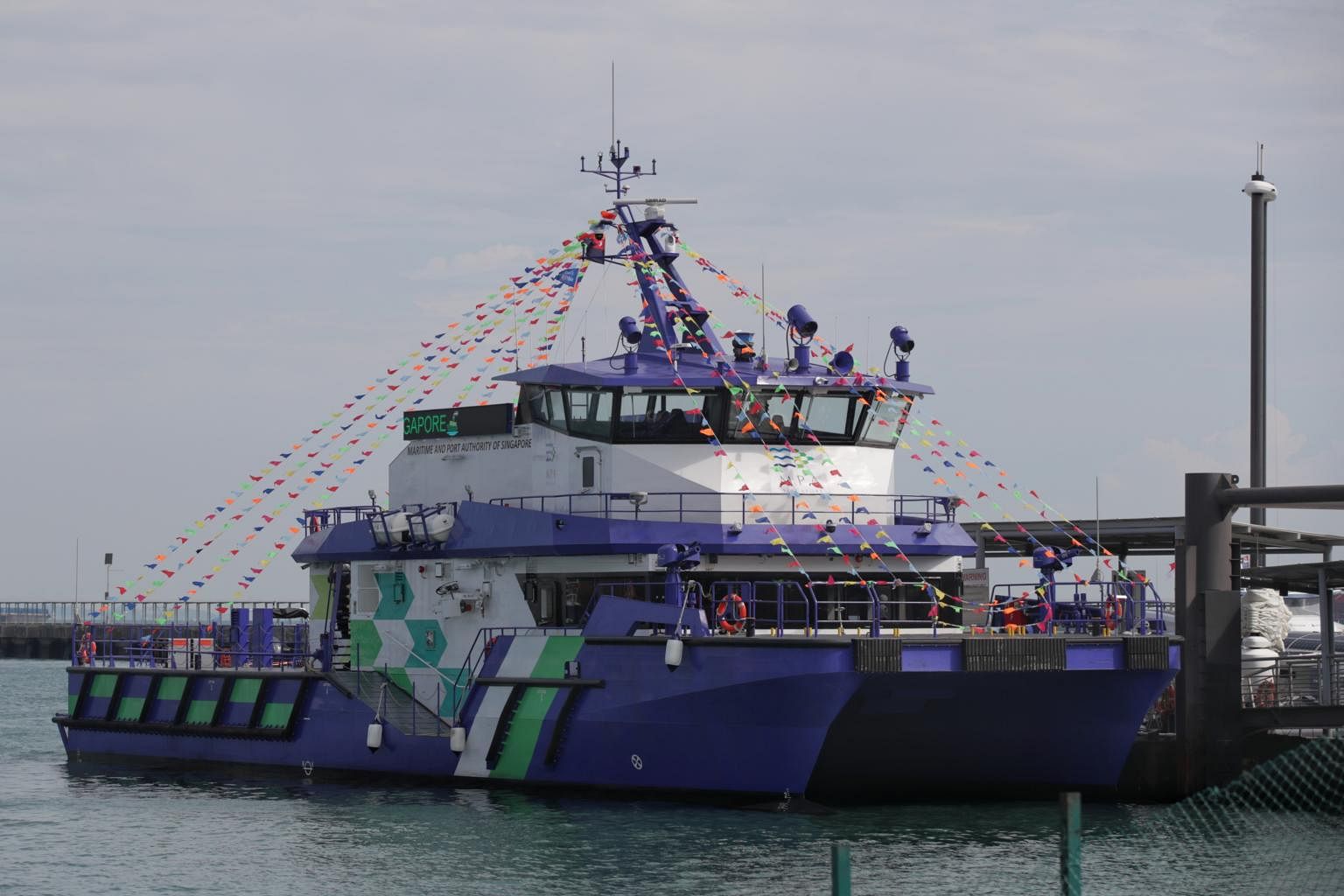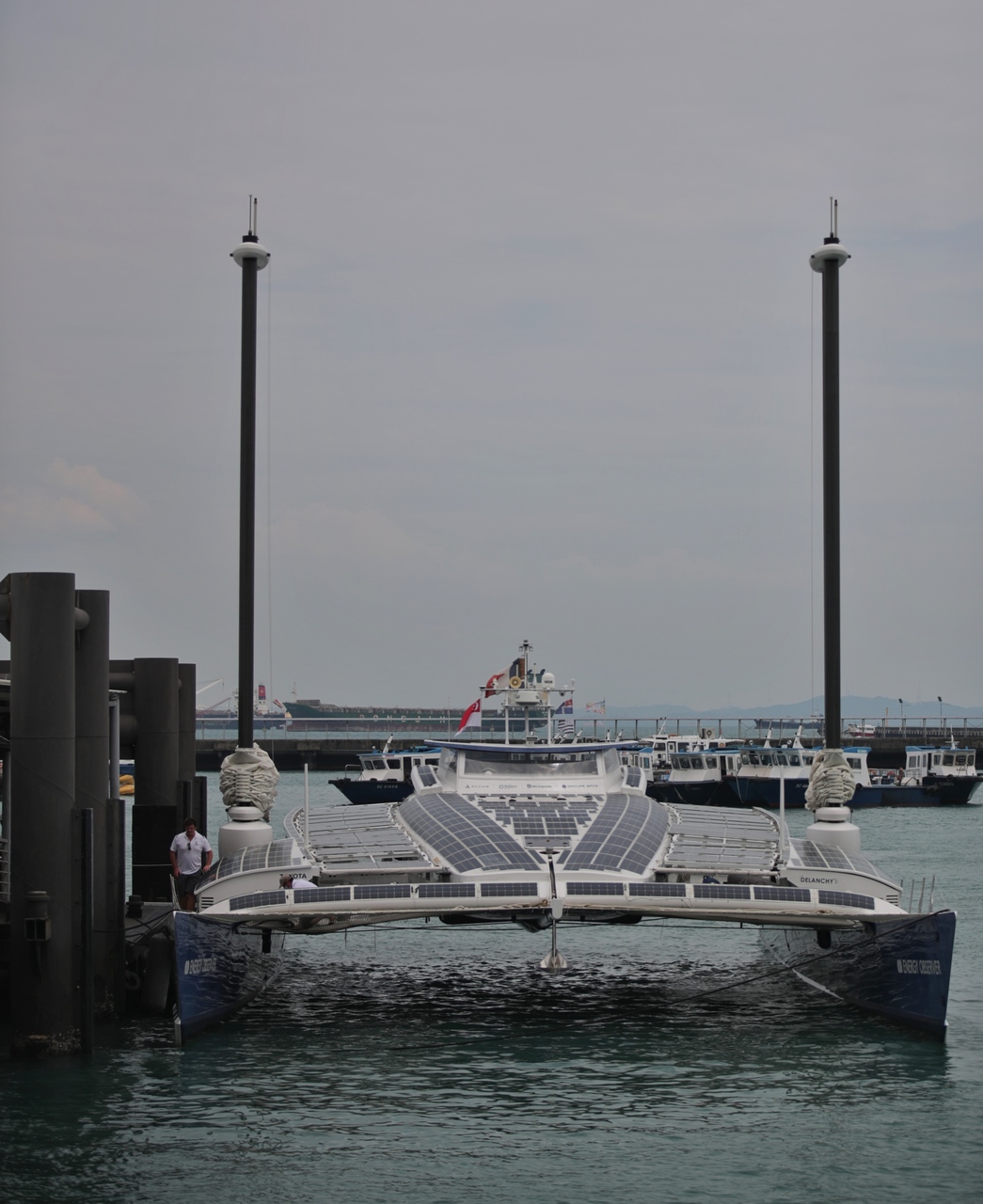9,000 sq m landmark with berths for green ship trials to be built by 2025 on Southern Waterfront
Sign up now: Get ST's newsletters delivered to your inbox

The MPA Guardian can conduct search and rescue, oil spill response and other salvage operations.
ST PHOTO: GIN TAY
Follow topic:
SINGAPORE - A new 9,000 sq m integrated hub with berths from which the public can view tests and showcases of greener ships will be ready by the end of 2025 on the Southern Waterfront.
Called The Waves, the future waterfront landmark will also be a centre for marine technology companies and have a sky terrace as well as food and beverage (F&B) options for visitors, the Maritime and Port Authority of Singapore (MPA) said on Friday (April 8).
The exact location is yet to be determined, with the authority in discussions with the Urban Redevelopment Authority.
MPA unveiled its concept at Marina South Pier during the Singapore Maritime Week, saying that the building’s name stands for a Waterfront for All, innoVation, Enterprise and Sustainability.
It is part of the maritime sector’s efforts to not only stay at the vanguard of green technology in shipping but also to make Singapore the Silicon Valley of marine technology, with aims to grow the number of start-ups in the field here from 30 in 2021 to 150 in 2025.
It will also be where the $155 million Global Centre for Maritime Decarbonisation, set up last year to enable companies to more quickly carry out real-world trials of new technologies, will be located.
The centre awarded its first invitation for proposals to study ammonia refuelling safety in January this year, and will carry out trials and demonstrations when the study is done.
Most ships currently use conventional fuel or liquefied natural gas, but new fuels such as ammonia, biofuels and even hydrogen are being simultaneously tested to reduce the sector’s carbon emissions.
On Friday, MPA also launched its new patrol craft, MPA Guardian, a hybrid diesel-electric vessel that can conduct search and rescue, oil spill response and other salvage operations.
At 34m, it is significantly bigger than MPA’s existing fleet of six 17m patrol craft, and has a top speed of 30 knots.
A joystick allows it to be moved laterally, and a second portable joystick also means it can be manoeuvred from the deck.
Called The Waves, the future waterfront landmark will also be a centre for marine technology companies and have a sky terrace as well as food and beverage (F&B) options for visitors, the Maritime and Port Authority of Singapore (MPA) said on Friday (April 8).
The exact location is yet to be determined, with the authority in discussions with the Urban Redevelopment Authority.
MPA unveiled its concept at Marina South Pier during the Singapore Maritime Week, saying that the building’s name stands for a Waterfront for All, innoVation, Enterprise and Sustainability.
It is part of the maritime sector’s efforts to not only stay at the vanguard of green technology in shipping but also to make Singapore the Silicon Valley of marine technology, with aims to grow the number of start-ups in the field here from 30 in 2021 to 150 in 2025.
It will also be where the $155 million Global Centre for Maritime Decarbonisation, set up last year to enable companies to more quickly carry out real-world trials of new technologies, will be located.
The centre awarded its first invitation for proposals to study ammonia refuelling safety in January this year, and will carry out trials and demonstrations when the study is done.
Most ships currently use conventional fuel or liquefied natural gas, but new fuels such as ammonia, biofuels and even hydrogen are being simultaneously tested to reduce the sector’s carbon emissions.
On Friday, MPA also launched its new patrol craft, MPA Guardian, a hybrid diesel-electric vessel that can conduct search and rescue, oil spill response and other salvage operations.
At 34m, it is significantly bigger than MPA’s existing fleet of six 17m patrol craft, and has a top speed of 30 knots.
A joystick allows it to be moved laterally, and a second portable joystick also means it can be manoeuvred from the deck.
It can charge itself while in operation by using the movement of the propulsion engine to generate electricity for the vessel while it is out at sea.
There are three modes of operation: fully electric, which can be sustained for up to three hours when operating at full capacity per charge; hybrid, where both diesel and electricity are used at the same time; and diesel mode, the power of which is partially converted back to electricity.
The craft also has an attached crane, a small launch boat for operations in more shallow waters, a launching platform for drone deployment, chemical gas detectors and showers that people can use after coming into contact with oil spills.
It is manned by four to eight crew members and can fit 24 passengers comfortably.
MPA had been developing the craft with the Defence Science and Technology Agency and Penguin Shipyard International since 2020.
There are three modes of operation: fully electric, which can be sustained for up to three hours when operating at full capacity per charge; hybrid, where both diesel and electricity are used at the same time; and diesel mode, the power of which is partially converted back to electricity.
The craft also has an attached crane, a small launch boat for operations in more shallow waters, a launching platform for drone deployment, chemical gas detectors and showers that people can use after coming into contact with oil spills.
It is manned by four to eight crew members and can fit 24 passengers comfortably.
MPA had been developing the craft with the Defence Science and Technology Agency and Penguin Shipyard International since 2020.


Penguin Shipyard International chairman Jeffrey Hing said: “This is not a vessel designed to intimidate or frighten - otherwise, we would have painted it grey or black - but to charm and to inspire.”
Berthed next to MPA Guardian at Marina South Pier in conjunction with the showcase was the world’s first zero-emission hydrogen ship, Energy Observer, which uses energy from the sun, wind and the hydrogen it distils from the sea to power its round-the-world voyage from France.
Singapore is its 70th port of call. It is harbouring here to wait out the monsoon in the Indian Ocean before travelling to Thailand, Vietnam and possibly Cambodia.
Berthed next to MPA Guardian at Marina South Pier in conjunction with the showcase was the world’s first zero-emission hydrogen ship, Energy Observer, which uses energy from the sun, wind and the hydrogen it distils from the sea to power its round-the-world voyage from France.
Singapore is its 70th port of call. It is harbouring here to wait out the monsoon in the Indian Ocean before travelling to Thailand, Vietnam and possibly Cambodia.

ST20220408_202294158827: Gin Tay / cxmpa/ Clement Yong Energy Observer seen at Marina South Pier on Apr 8, 2022.
PHOTO: ST

